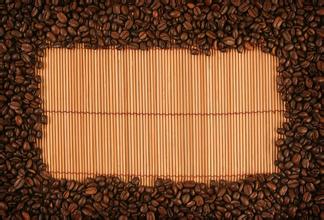How long can the coffee beans be kept after they are taken apart? how to peel off the coffee beans after the coffee results?
How long can the coffee beans be kept after they are taken apart? how to peel off the coffee beans after the coffee results?
In the process of washing, the peel and pulp of the fruit are treated with a special desizing machine and the coffee beans are peeled off. The coffee beans then enter the fermentation tank for fermentation treatment so that the mucous membrane is no longer sticky. The sugars in the mucous membrane are decomposed during fermentation. Depending on the fermentation method, the fermentation time is usually 12 hours to 6 days (some growers use the watering system to ferment coffee beans. This method is called the Kenyan washing method (Kenyan method) and usually lasts for several days). It is extremely important to decide when to stop fermentation. Once the coffee is overfermented, the taste of the coffee will become too sour. Once the sticky material in the mucous membrane is decomposed, it will be washed down with a lot of water. (the waste water from the raw bean treatment process is considered to be the source of pollution in the coffee industry. Today, advanced technologies are being developed in many areas to recycle and filter the waste water produced by this process. Water shampoo was born in the 19th century, also known as "wet processing".
A tightly controlled fermentation process increases the acidity of the coffee and is reflected in the final taste of the coffee. But as long as the coffee is washed immediately after the fermentation process, the taste of the coffee can be improved and has a bright sour taste.
Arabica has a variety of tastes and acidity, high acidity, less caffeine, red color, less oil, can only grow above 800 meters above sea level, strong aroma, and a variety of different flavors, taste more pure, taste lubrication, chocolate, vanilla and nutty flavor. This kind of coffee is used in the best coffee shops in the world, and experts believe that the quality of this kind of coffee depends on the reasonable blending of bean seeds. Brazil is the largest growing country of Arabica beans, followed by Colombia and India
The process of this method is the simplest. The fruit begins the process of sun drying without treatment after picking. This is the oldest method of treatment in existence. This method is still used in places such as Ethiopia and Brazil.
Natural sunlight can retain the fruity aroma of coffee fruit. When you taste this kind of coffee, you will find that the coffee has a fruity aroma and a brighter taste. After drying, people will use special machines to remove the shell of the surface layer. This process is called drying and shelling (Dry Milling).

Important Notice :
前街咖啡 FrontStreet Coffee has moved to new addredd:
FrontStreet Coffee Address: 315,Donghua East Road,GuangZhou
Tel:020 38364473
- Prev

How to adjust the standard scale of coffee bean grinding
Coffee bean grinding size standard scale when grinding beans, the size of the powder depends on the way it is cooked. Generally speaking, the shorter the cooking time, the finer the ground powder; the longer the cooking time, the thicker the ground powder. In terms of actual cooking, the ESPRESSO machine takes a very short time to make coffee, so the coffee powder is the finest.
- Next

The coffee beans grow from there.
Coffee beans usually grow from there for two to three years, and coffee trees can grow to a height of about five to ten meters, but in case coffee beans lose their aroma, taste bad, and are easy to harvest, farmers often repair them to about 1.5 to two meters. The change begins to bear fruit three to five years after sowing. For 20 years after the fifth year, the mature coffee berries are harvested and look like cherries.
Related
- Guji coffee producing area of Guji, Ethiopia: Humbela, Shakiso, Wulaga
- What is the most expensive variety of Qiloso in BOP multi-variety group?
- How to store the coffee beans bought home?
- Why are Yemeni coffee beans so rare now?
- Ethiopian Sidamo all Red Fruit Sun Sun Santa Vini Coffee beans
- SOE is mostly sour? What does it mean? Is it a single bean? what's the difference between it and Italian blending?
- Is Italian coffee beans suitable for making hand-brewed coffee?
- How to choose coffee beans when making cold coffee? What kind of coffee beans are suitable for making cold coffee?
- Just entered the pit to make coffee, what kind of coffee beans should be chosen?
- Can only Japan buy real Blue Mountain Coffee? What are authentic Jamaican Blue Mountain coffee beans?

